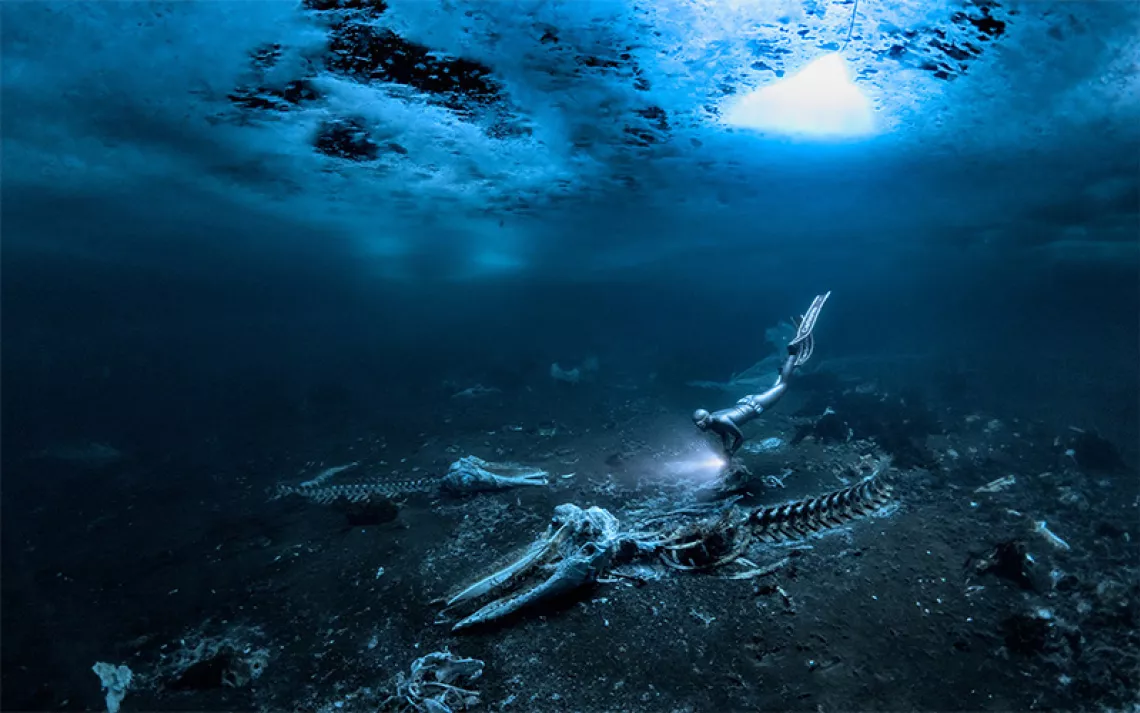Hurricane Ida Leaves Trail of Destruction in Badly Polluted Cancer Alley
A visual record of how extreme weather impacts fossil fuel infrastructure

Flares from Shell's Norco Manufacturing Complex behind a gift shop on Apple Street in Norco, Louisiana, the day after Hurricane Ida hit. Shell's industrial complex has both refining and chemical facilities. It lost power and flared for days.
For years, I have been documenting all aspects of climate change and its effects on frontline communities—from the forces driving it, to those fighting against it, to the impacts the warming planet is having (namely more intense storms). Based in the New Orleans area, I knew it was just a matter of time before I would be affected by a storm myself. Ida was that storm.
I rode out the hurricane on the north shore of Lake Pontchartrain, across from New Orleans, in St. Tammany Parish. By the time the storm reached me, it had weakened from a Category 4 to a Category 2. On August 9, the anniversary of Hurricane Katrina, gusts of wind and sheets of rain beat down on my house for hours.
I headed out to Louisiana’s Cancer Alley, an 85-mile stretch along the Mississippi River between Baton Rouge and New Orleans. There are over 100 fossil fuel facilities in that area, including petrochemical plants and refineries. I wanted to see how the drivers of the climate crisis fared.
From over 30 miles away, I could see billowing black smoke coming from flares at Shell's Norco Manufacturing Complex. When I got close to the refinery and petrochemical plant, the smells at that time were overwhelming. These were the biggest and dirtiest flares I had ever seen.
A few days later, the Louisiana Environmental Action Network arranged for me to take a Cessna flight to see Cancer Alley from the sky.
My photographs of industry and those affected by it serve as documentation of man's role in creating climate change and environmental degradation. This series documenting Ida’s aftermath in Louisiana’s Cancer Alley is my visual testimony that humanity is courting imminent disaster.
*

A Norco resident checking damage to his home the day after Hurricane Ida. Black smoke coming from dirty flares at Shell’s complex polluted the sky.

Peter Anderson with his rescue dogs, Phoebe and Joe, walking over a railroad track in Norco the day after Hurricane Ida hit. Shell’s complex looms behind him. He used to work for Shell and said he never saw it flare so bad.

Flares at the ExxonMobil Refinery in Baton Rouge on September 2, a few days after Hurricane Ida hit. The storm knocked out power to millions and caused shutdowns at fossil fuel industry sites. When refineries and petrochemical plants restart, they burn off extra hydrocarbons that flare, producing even more greenhouse gas emissions.

Man driving through floodwater in Norco the day after Hurricane Ida made landfall. A flare from Shell’s Norco facilities filled the sky, with black smoke in the distance.

Flares at Shell’s Norco complex on September 1 behind a Dollar Store on Airline Highway.

A flare at a Dupont plant in LaPlace, in the middle of an area that has become known internationally as Cancer Alley. The DuPont-Denka chemical complex, which makes neoprene, a synthetic rubber used in wetsuits, is notorious for its toxic chloroprene emissions.

A dirty flare at the Marathon Refinery in Garyville on September 2 contributed to the toxic emissions that filled the air along the Mississippi River between Baton Rouge and New Orleans. Fossil Fuel facilities often burn off large quantities of hydrocarbons following storms when they lose power.

Smoke billowing from the Baton Rouge ExxonMobil Refinery on September 2. The facility had numerous flares that burned for days following Hurricane Ida.

Marathon's Garyville refinery is Louisiana's largest.

Flooding at ExxonMobil’s Baton Rouge refinery following Hurricane Ida.
 The Magazine of The Sierra Club
The Magazine of The Sierra Club



